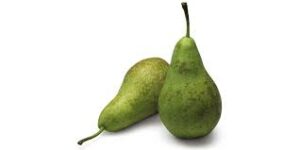Anyone who has been around in fruit storage for some time knows that the capacity of adsorbers has increased over the years. Around the year 2000, the advice was to use 22 kg CO2 per day per 100 tons of Conference pears. This was quickly rounded up to 25 kg. In a few years, the capacity requirement was increased to 30 kg, and later to 35 kg. Currently, 40 kg is generally adopted, and in some cases this appears not to be sufficient. How is that possible? Have pears started breathing faster?

No of course not. If we look at the capacity required at 3% CO2, as in the calculation values above, pears will produce 10-12 kg CO2 per 100 tons at the beginning of the season. This is just after cold stores have been conditioned (3% oxygen, 0.7% CO2). At the end of the season, this value has increased to 15-20 kg per 100 tons. One can conclude that the initial calculation, which takes into account a safety margin, is quite correct. So, what is going on?
The secret is in the adsorbers. The distribution plates and sufficient activated carbon are of course crucial, just as the flow direction through the machine. But, the real capacity decline is caused by the adsorber fan. Until about 10 years ago, most adsorbers had indirect-drive fans, which were much more powerful. The fans used currently applied are direct-drive, and about 30% cheaper, however, they ‘collapse’. Fact is that, therefore, many adsorbers do not reach their capacity, and this has been solved by increasing the calculation value per 100 tons.
Blue Atmosphere is the only producer in The Netherlands to use the original belt-driven fans. The capacity of our adsorbers is so much higher (over 50%) that the higher power consumption is more than made up for. Savings are around 20%. In conclusion, German quality and an honest story.
Of course, in many cases it is possible to replace a fan. Please feel free to contact us for more information.